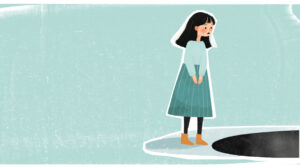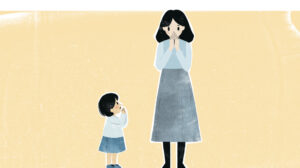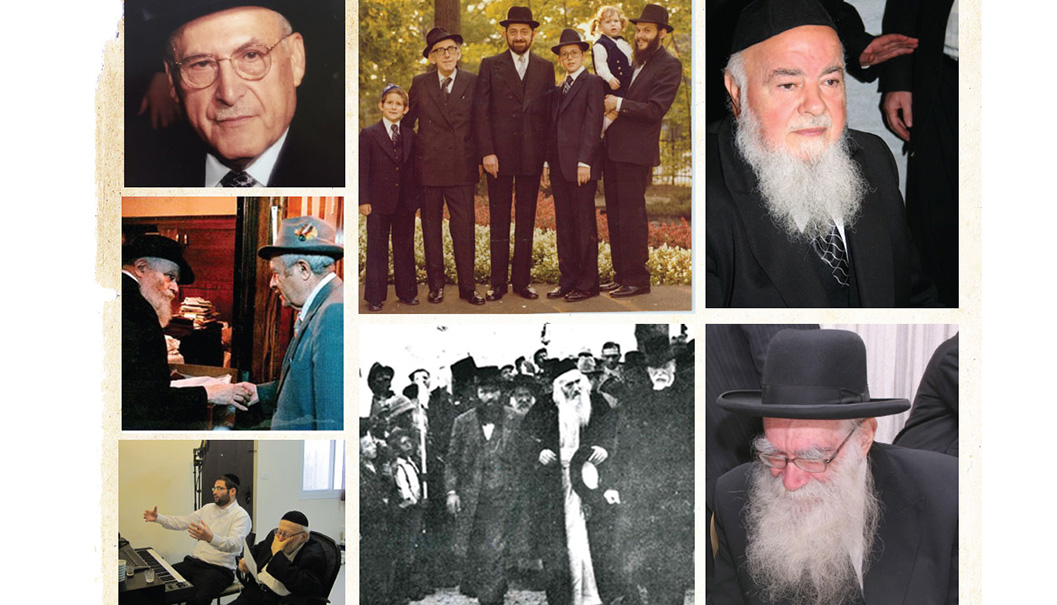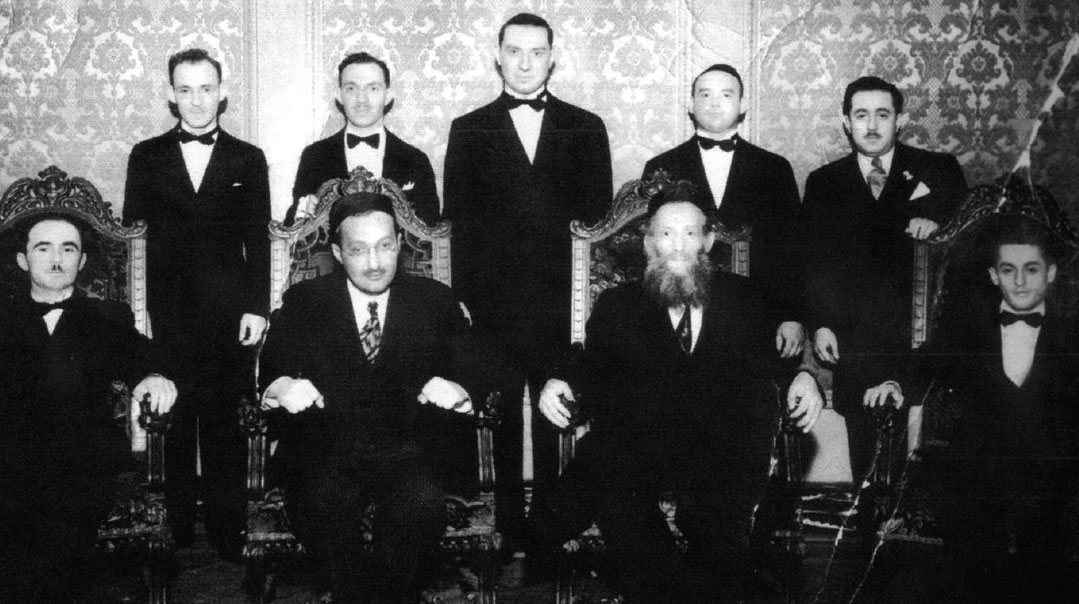The Apartment Above the Shtibel

Now, in hindsight, I wonder about it. A shul that had a rebbetzin, and no official rav? But back then it seemed natural
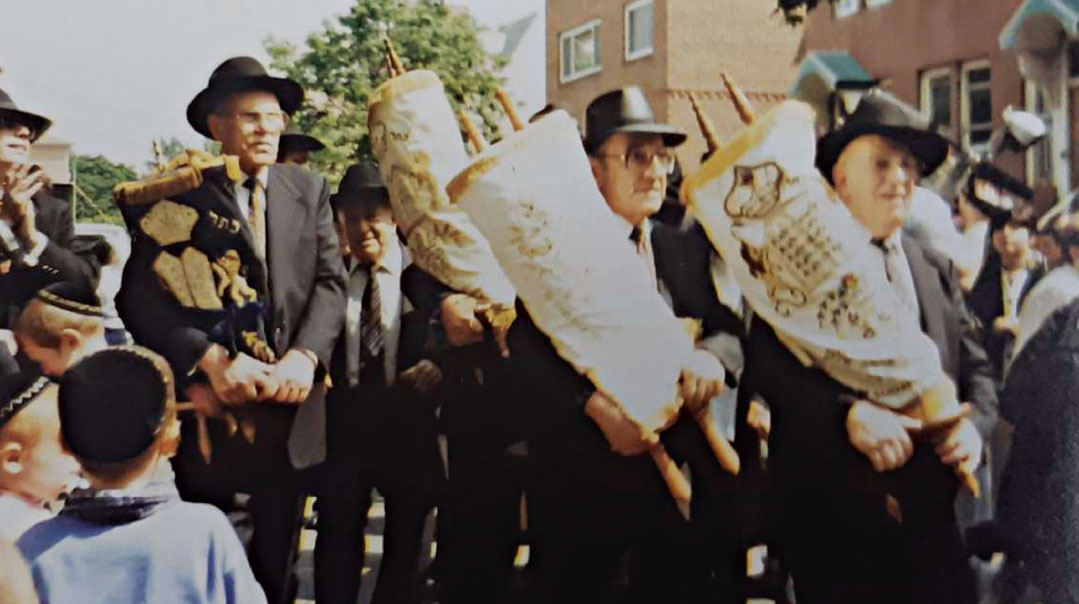
On top of a Boro Park shtibel, my great-grandmother welcomed endless circles of family, friends, and loyal mispallelim. Somehow this tiny woman, staunchly faithful to the heritage of Galicia’s chassidic courts, intuited the sensitivities and proclivities of a new generation, offering warmth and acceptance with wit, wise advice, and her famous kugel. What was her secret?
I didn’t live in Boro Park, but I always felt a little spark of ownership when I passed by a brick building on a corner of 16th Avenue. It was a shul known as the Bertcher shtibel, and it was our family’s shul. To be more exact, it was my great-grandmother, Rebbetzin Chaya Hinda Rokeach’s shul. She was the Bertcher Rebbetzin, the presence and the pillar holding up a shul that had lost its rav decades before.
Now, in hindsight, I wonder about it. A shul that had a rebbetzin, and no official rav? But back then it seemed natural. After her husband was felled by a heart attack, an able gabbai and her sons and sons-in-law, particularly my grandfather, helped run the shul. She supplied the kiddush every week — trays of sponge and marble cake, and a famous, uniquely American cornflakes kugel. The mispallelim loved the shul, and loved davening together. And so the minyan kept running.
What kind of presence must she have had, what kind of respect and loyalty must she have won, to keep that shul going for so many years?
I wonder about other things too. My diminutive great-grandmother — at less than five feet, we called her “Little Babi” to differentiate her from our grandmother — was the picture of a rebbetzin from the alte heim. She covered her head with a “kupka” — something like a shtern tichel, with some fabric representing hair attached — and wore only four colors, all as conservative and quiet as could be: black, navy, brown, and gray. She greeted Shabbos with a white kerchief and white lace apron. She davened devotedly. In short, she was the archetypical chassidishe rebbetzin.
Yet there was something remarkably broad about her outlook. I knew she was smart, so it seemed normal to me that she could quote Tanach, that she could write letters in Ivrit to the Israeli grandchildren, or that she avidly followed world news. It took years for me to realize how unusual that was for a woman who had never been formally schooled, and who had grown up in an insular, ideologically zealous home.
More than that, she accepted, even celebrated, her American grandchildren and their accomplishments. She gave each child and grandchild space and affirmation to find their path in this new country where all the rules were different and chassidus seemed like a dying relic.
What would happen if I could revisit all those memories and recalibrate my perceptions from a more adult perspective?

I reached out to some of the people who knew her well, probing them for their memories and individual takes. As I listened and took notes, I realized this was a futile quest. So many people were touched and affected by this woman — and each one saw Little Babi’s persona through their own disparate filter, told a narrative that highlighted their own values. The cousins who take pride in their chassidic lifestyle saw her fealty for tradition. The cousins who value higher learning talked of her thirst for knowledge. The cousins who settled in Eretz Yisrael spoke of her love and concern for the Holy Land. The aunt who hates structure loved her spontaneity, the relative who relishes davening marveled at her three tefillos every day.
Instead of gaining a single clear portrait of my great-grandmother, I was gaining a multihued impressionist painting, layered with so many different opinions and perspectives. In a way it was vaguer than the sharp portrait I’d sought — but it was also so much richer.
***
Little Babi, Chaya Hinda Spira, was born in 1895 to a family of chassidic nobility. Her father was the rebbe of a small Galician community called Bertch. A descendant of Ropshitz, Lelov, Lancut, Dinov, and Apt, she married her second cousin, Rav Tzvi Elimelech Rokeach, at the close of World War I. Her Polish-born parents had moved to Beregzaz (Berekhovo) in Czechoslovakia, and the young couple initially lived in their home.
Everyone I asked described my great-grandfather in the same pose: sitting over a Gemara. All agreed that he left the practical decisions to his wife, who mastered many languages, managed the finances, and had a shrewd understanding of human nature. My great-aunt Dindy (a childhood nickname for Mindel that she never outgrew) remembers that the neighborhood women used to visit her mother for her wise counsel — sometimes she’d bring them into the kitchen while she baked, more elegant women were seated in the dining room, and every now and then, when the house was too full, she’d take a woman into her own bedroom where she could hear her out and offer advice.
Aunt Dindy surmises that debt from the construction of a new house is what prompted her father to sail to America, where he hoped to make money, then eventually rejoin them. His landsleit who had also made the trip warned him to change his plans and bring his family to New York instead. War was about to break out.
Little Babi traveled with her five children by train, then boat, and arrived in the United States on May 16, 1939. They settled into a tenement apartment in the Lower East Side, and it didn’t take long before the Rebbetzin was back in her role, albeit in new surroundings.
Later the family moved to Boro Park — where, back then, a shtreimel was a rare sight, and an authentic chassidish shtibel a rarity. The Bertcher shtibel on the corner of 16th Avenue and 54th Street attracted a mix of Americans and “greeners.” It took the warmth and erudition of the Rav, his magnificent tefillos at the amud, and the skill and charm of the gabbai Hersh Meilech Bleier to create a cohesive whole out of all those parts, but with time, the mispallelim of the shtibel became a veritable family. A family whose matriarch lived one flight up, right over the shul, keeping her pulse on the goings-on even though she stayed behind the mechitzah.
***
I still remember when I first saw her,” Mrs. Judi (Bleier) Dobner tells me. “We had just moved from the Lower East Side to this new neighborhood called Boro Park, and I saw our new neighbor: this woman in an old-fashioned dress down to the floor, wearing an apron and a turban. She looked straight out of the heim — what I imagined a babi would look like. We didn’t have any babbies or zeidies, of course; my parents were Holocaust survivors. But the Rebbetzin became our babi.”
Judi’s parents, the Bleiers, both worked long hours to make ends meet. Their children — Judi (Pessela) and her older brother Volvi — used to come from school straight to the Rokeach household, where Little Babi took them under her wing.
“The Rebbetzin used to find all these cute ways to entertain us,” Judi remembers. “She had tons and tons of buttons, and she gave me the job of sorting them into little bags. She said that when I’d get married she would give the buttons to my chassan. (Two weeks after the wedding, she came to our new apartment with a wedding gift and the buttons!)
“The Rebbetzin was brilliant,” Judi says. “She knew everything — she helped me with my limudei kodesh homework. She knew Chumash and Navi, she knew how to read Rashi script.”
My mother always told us that Little Babi had never gone to Bais Yaakov, but she had such a deep thirst for wisdom that she used to listen in when the melamdim came to her childhood home to teach her brothers. Somehow she managed to pick up a tremendous body of knowledge.
Decades later, after a pizza store opened across the street, Little Babi was once looking out of her window and marveling at how many people managed to enter the tiny eatery.
“It’s like the Beis Hamikdash,” my mother said jokingly.
“Right,” Little Babi answer, quoting Pirkei Avos easily. “No one ever said ‘tzar li hamakom,’ no one felt uncomfortable or cramped.”
When I ask Aunt Dindy about her mother’s thirst for knowledge, she remembers a story from their early days in America, about a year after they’d arrived. Aunt Dindy fared poorly on the high school placement test, because she hadn’t yet mastered English, and soon they learned that she would be placed in a vocational high school, instead of the more demanding commercial or academic high schools.
Little Babi asked someone to translate Aunt Dindy’s Czechoslovakian school transcripts, and marched down to the public school in her dark dress, turban, and kupka. She asked an English-speaking neighbor to come along and translate, and she demanded that the principal place her gifted daughter in the academic program. “Look,” she pointed at the report cards, “the math teacher in Beregszasz commented here that she is ‘unike’ — a uniquely bright student. And you want her to become a seamstress?”
Oops! We could not locate your form.


